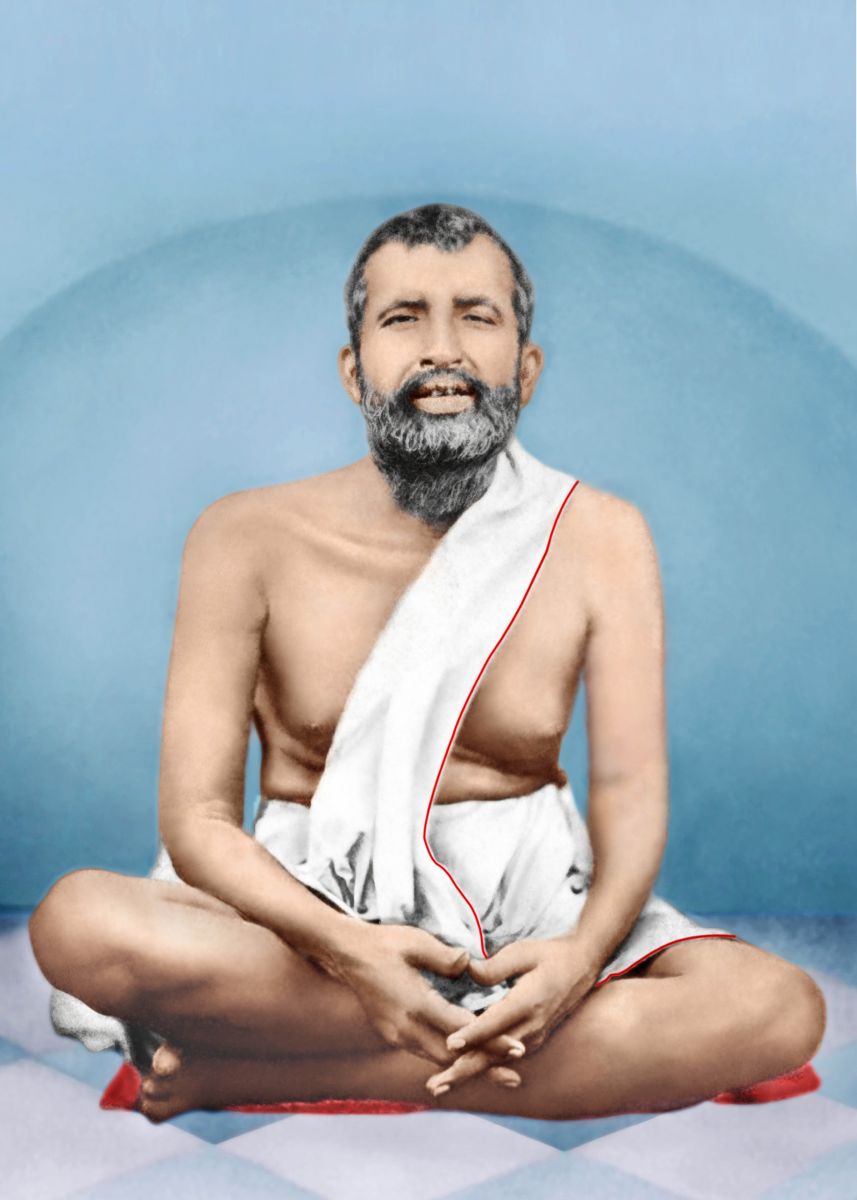
Early Life and Spiritual Awakening
Born Gadadhar Chattopadhyaya on February 18, 1836, in the village of Kamarpukur, West Bengal, to a poor but pious Brahmin family. From his very childhood, Gadadhar showed extraordinary spiritual inclination and an aversion to formal schooling. He loved to spend hours in solitary meditation, often experiencing ecstatic visions.
His early life was marked by profound spiritual experiences. At the age of seventeen, he came to Calcutta (now Kolkata) as a priest in the Kali Temple at Dakshineswar, built by Rani Rasmani. It was here that his intense spiritual quest began in earnest. He began to yearn for a direct vision of Mother Kali, going to extreme lengths in his devotional practices.
Intense Sadhana and Visions
Driven by an insatiable longing for God, Sri Ramakrishna plunged into various spiritual disciplines (Sadhanas) with unprecedented intensity. He practiced different paths of Hinduism, including Vaishnava Bhakti, Tantra, and Advaita Vedanta, under the guidance of various teachers who themselves were astonished by his rapid progress.
His first teacher was an ascetic woman, Yogeswari, who taught him Tantric practices. Later, he was guided by a Vedantic monk, Totapuri, who helped him realize the Advaitic truth of non-duality. He experienced Nirvikalpa Samadhi, the highest spiritual state, in just three days under Totapuri's tutelage, a state which normally takes years for even dedicated aspirants.

What set Sri Ramakrishna apart was his bold exploration of non-Hindu paths. He practiced Islam, observing its rituals, praying in a mosque, and experiencing its divine vision. Similarly, he delved into Christianity, meditating on Jesus and experiencing a vision of Christ, affirming the truth in these paths as well.
Through these direct experiences, he arrived at his central teaching: "Yata Mat, Tata Path" (As many faiths, so many paths), emphasizing the harmony of religions. He demonstrated that all sincere spiritual paths ultimately lead to the same divine reality.
The Divine Mother and His Disciples
For Sri Ramakrishna, the Divine Mother Kali was the Supreme Reality, his constant companion and guide. He spoke to her, saw her, and received direct instructions from her.
Towards the later part of his life, disciples began to gather around him, drawn by his spiritual effulgence and unconventional teachings. Among them was Narendranath Datta, who would later become Swami Vivekananda, the great exponent of Vedanta to the West and the founder of the Ramakrishna Mission.
Legacy and Teachings
Sri Ramakrishna's life was his message. He taught that God-realization is the supreme goal of human life and that it can be attained through various paths. His teachings are simple yet profound, often conveyed through parables and direct experiences.
He passed away on August 16, 1886, leaving behind a profound spiritual legacy that continues to inspire millions worldwide. His life and teachings form the foundation of the Ramakrishna Math and Ramakrishna Mission, dedicated to the ideal of "Service to God in Man."
